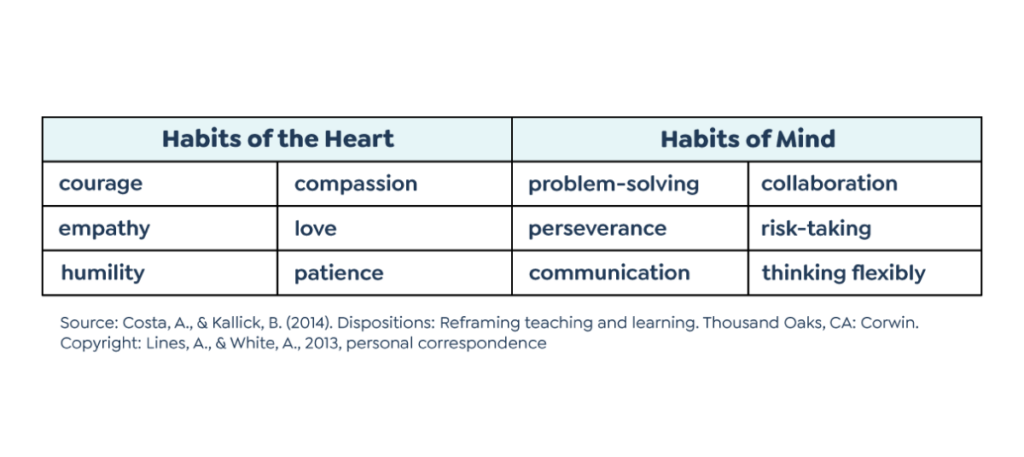Inspired by my journey as a multilingual learner and the urgent need for inclusive and dynamic learning environments, I developed the EMBRACE framework to equip teachers with actionable strategies.
Imagine being a six-year-old child whose family has left everything behind in search of a better future in America. You find yourself in a classroom in a new country, unable to speak the language. Every day feels like facing an unpredictable ocean—some waves are small and manageable, while others crash over you, leaving you overwhelmed with fear and anxiety. Learning becomes a struggle, often bringing you to the brink of tears, longing for a sense of belonging and understanding in an unfamiliar world.
That was me. Looking back, attending school required courage. As an immigrant from Vietnam of Chinese descent, school often felt like a daunting challenge. I lacked an understanding of learning dispositions—habits of mind and attitudes that shape how learners approach challenges, persist through difficulties, and adapt to new situations. This left me unprepared to handle academic and social hurdles. I experienced cultural loss, alienation, and homesickness. Language barriers made it difficult for me to express myself and connect with others. At times, I faced discrimination and the stress of adapting to new customs and values.
Despite these challenges, I possessed the characteristics of a positive learner identity—a belief in my capacity to learn, a sense of agency, and the motivation to succeed. I knew I could learn a new language because I spoke two at home. I hoped connections with peers would help me navigate this new environment. Academic success was highly valued in my culture. I was motivated to achieve good grades, eager to please my teachers and make my parents proud.
The EMBRACE Framework
Inspired by my journey as a multilingual learner and the urgent need for inclusive and dynamic learning environments, I developed the EMBRACE framework to equip teachers with actionable strategies. This framework fosters essential learning dispositions while creating a space where every student can thrive.
A learning disposition refers to the attitudes, habits of mind, and tendencies that shape how a learner approaches and engages with learning experiences. These dispositions influence not only how students take in information but also how they persist through challenges, apply knowledge across contexts, and reflect on their learning process. The table below highlights key dispositions, though many more exist.
Establish a Welcoming Learning Environment
Start by ensuring students know their classroom is a safe and inclusive space where thinking and discussion are encouraged. Use culturally relevant content and allow learners to use their home languages to support their learning. Recognize and name the learning dispositions students already possess. Acknowledging these strengths validates their capabilities and fosters confidence. Engage students in conversations about the habits of mind you want to develop together.
 Mine the Qualities
Mine the Qualities
Use authentic teachable moments, past experiences, role models, cultural traditions, and popular media to explore and uncover various dispositions. For example, stories like The Lion King or Tangled can illustrate self-confidence and persistence. Work with students to analyze characters’ challenges and how they demonstrate learning dispositions. Use guiding questions such as: What might this disposition look like? Sound like? Feel like? Encourage students to discover these dispositions in their own lives and beyond the classroom.
 Boost Thinking
Boost Thinking
Promote curiosity by asking open-ended questions that spark exploration rather than simply providing answers. Questions that begin with “why,” “how,” and “what if” foster critical thinking, reasoning, and analysis. Ensure that questioning and tasks engage students signaling that their thinking is valued. Consider prompting students with questions such as:
- What helps me stay motivated when tasks are challenging?
- Why is it important to encourage me with positive thinking?
- How did thinking interdependently help me complete this task?
 Ride it Out
Ride it Out
Our instinct is often to rescue students when they struggle. However, research shows that productive struggle fosters resilience and growth (Dweck, 2006). Carol Dweck’s work on growth mindset emphasizes that mistakes are learning opportunities, while Brené Brown encourages us to “choose courage over comfort.”
Students need the chance to navigate challenges independently. Instead of stepping in too soon, guide them with questions like:
- What is one step you can take when learning feels difficult?
- How will you push through challenges instead of giving up?
Supporting students through struggle—rather than removing obstacles for them—cultivates perseverance and long-term growth.
 Amplify Feedback
Amplify Feedback
Effective feedback is one of the most powerful influences on learning (Hattie & Timperley, 2007). It should help students recognize what they know, what they need to improve, and what steps to take next. Providing timely, authentic feedback that highlights their learning dispositions fosters growth and resilience. For example:
The way you tried a different approach after the first strategy didn’t work shows your persistence.
I noticed how you asked clarifying questions to deepen your understanding—that’s a great example of curiosity in action.
This kind of feedback helps students reflect on their learning and apply strategies for future challenges.
 Clarify Goals and Purpose
Clarify Goals and Purpose
Set clear learning intentions and co-construct success criteria with students to develop dispositional expertise. Use self-reflection tools such as checklists (e.g., “Language Learning Effort and Persistence Checklist”) to help students monitor their progress. Guide them in setting meaningful goals connected to language acquisition and dispositional learning and celebrate moments of mastery when they recognize dispositions in themselves and others.
Engage in Speaking and Listening
Structured speaking and listening experiences play a critical role in language development. Engaging in active discussions about learning dispositions helps students practice turn-taking, active listening, and asking clarifying questions. Digital storytelling, where students create videos, blogs, or podcasts in multiple languages, further enhances their skills across the four language domains—Listening, Speaking, Reading, and Writing.
Progress Over Perfection
Dispositions take time and intentional effort to develop, but prioritizing progress over perfection fosters meaningful, lasting growth. Frank Ostaseski, in The Five Invitations, describes the “Law of Change and Becoming” as a cycle of transformation. This reminds us that learning, like life, is an ever-evolving process. By helping multilingual learners cultivate learning dispositions, we empower them to approach challenges with curiosity and resilience.
Empowering Multilingual Learners Through EMBRACE
As you reflect on how the EMBRACE framework can shape learning, consider the following questions:
- How can I help multilingual learners recognize their existing dispositional strengths and develop new dispositions?
- What new strategy will I try today to expand learning experiences in my classroom?
- With whom can I collaborate to strengthen my pedagogy?
By fostering learning dispositions, we create environments where multilingual learners thrive, build confidence, and develop the skills needed to navigate both academic and personal challenges. Let’s rise above the waves together.
Elevate the MLL learning experience with Impact Teams. Learn more here!
References
Brown, B. (2012). Daring greatly: How the courage to be vulnerable transforms the way we live, love, parent, and lead. New York, NY: Avery.
Costa, A. L., & Kallick, B. (2014). Dispositions: Reframing teaching and learning. Thousand Oaks, CA: Corwin.
Dweck, C. S. (2006). Mindset: The new psychology of success. New York, NY: Random House.
Hattie, J., & Timperley, H. (2007). “The power of feedback.” Review of Educational Research, 77(1), 81-112.
Ostaseski, F. (2017). The five invitations: Discovering what death can teach us about living fully. New York, NY: Flatiron Books.
Lines, A., & White, A. (2013). Personal correspondence.




